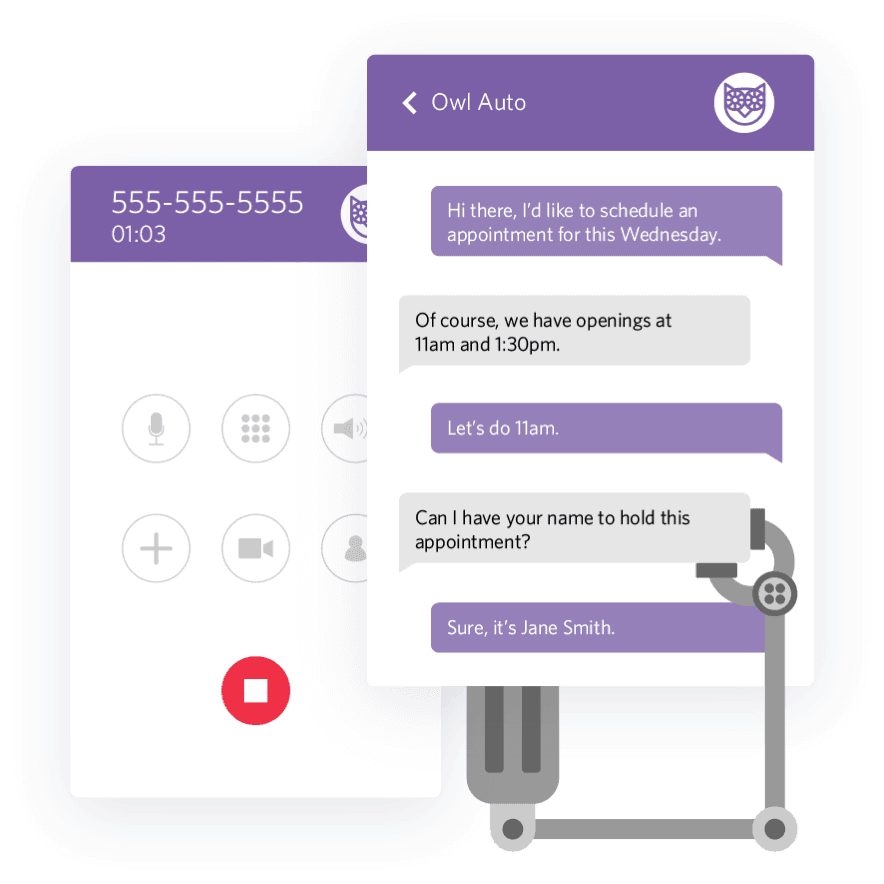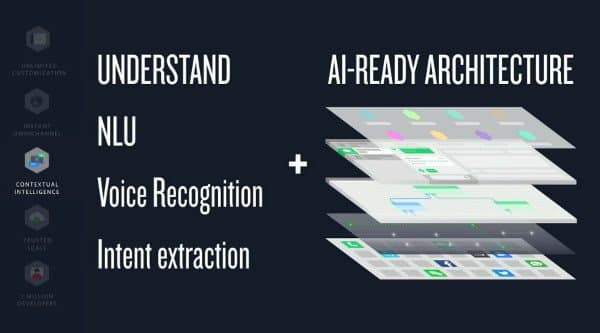Artificial Intelligence
Artificial Intelligence (AI) is the ability of a computer to mimic human cognitive skills, such as learning and understanding.
Although still in its early stages, AI is already changing the landscape of company communications. It allows businesses to engage with larger numbers of customers without sacrificing the quality of the interaction. Today, businesses use AI to chat with customers, route calls, send emails, and more. By 2020, research company Gartner predicts that 85% of a customer's engagement with an enterprise will occur without interacting with a human being.
This is possible because of advances in machine learning — the ability of AI systems to learn and improve automatically. They do so by taking in data through observations and interactions, and adapting accordingly without being explicitly programmed. Essentially, machine learning systems program themselves.
Rapid advances in AI like machine learning are bringing many businesses opportunities for growth and revenue. There are three main factors influencing this fast-moving space:
- Advances in artificial intelligence (AI) — A wealth of computing resources and large data samples have pushed AI further and faster than we ever expected.
- Adoption of APIs and microservices — Development has moved away from monolithic applications. Now AI can understand a calendar, look up current inventory, or make updates to systems in real-time.
- Adoption of messaging by businesses — Business-to-consumer communication has created new business use cases for bots, driving even greater adoption of this technology.
AI offers multiple benefits to both customers and businesses. Among the most apparent benefits to customers is shorter hold times. AI can be used to help route callers to the right destination quickly, skipping some — or all — of the traditional phone menu.
An example of an intelligent routing system is the Twilio TaskRouter API. TaskRouter dynamically assigns messages to the human agents that can best handle them. Messages and other types of data can be routed based on the "skills" required and the applied priority. AI applications like this help build superior customer experiences.
For businesses, cost savings are a significant driver behind the adoption of AI for customer support. While a customer service phone call costs a business $6-20 per call, automated calls cost, on average, 25 cents. However, the benefits of AI extend far beyond the bottom line. When automated services take care of a portion of customer service requests, agents are free to handle more complex requests. This reduces customer frustration while continuing to reduce the load on each live agent, allowing operators to specialize and give better service.
Bots are instances of software that lets a customer interact with a business through messaging. They are a common use of AI in business communications. While some bots operate on their own, many others support and augment a human agent who is representing the business.

Bots provide automated responses based on message analysis using technologies such as Natural Language Understanding (NLU) and Intent Extraction. Bots can learn from human decisions, so they get better with algorithmic and data-driven decisions day by day. Eventually this reduces the need for humans to step in.
When bots deliver a subpar experience compared to a human agent, companies are left to balance higher costs associated with human support agents and the negative customer satisfaction scores generated by a poor bot. It doesn't have to be this way. At Twilio, we allow you to integrate with third-party bot providers to create a conversational AI interface, to bridge the gap between human agents and self-service bots.
Contact centers are a hive of activity, filled with repetitive work and lots and lots of data. This is an ideal environment for AI and automation. If AI can deliver what we want it to, we can actually decrease costs while simultaneously increasing customer satisfaction.
However, we still need human agents to create intimacy with our customers. Intimacy drives customer satisfaction which creates loyalty. Loyal, satisfied customers tend to spend more money.
Ultimately, the question is not whether we should be using AI, but how do we apply it appropriately while still keeping that human touch.
We also need to keep our human agents happy. Agents with positive attitudes create better experiences for customers and stay with your contact center longer, reducing churn. Agent-assist AI can also be useful here. Ultimately, the goal of AI is to help customers have a more personalized and efficient experience without them even noticing. AI improves agent conversations by helping to anticipate customer needs and automate actions where possible. In cases where customers can self-serve, AI tools can help those interactions be more human.
Twilio Flex was built to allow complete customization all the way through the stack. AI can be applied at every layer. You can focus on using AI before the agent interaction, such as by building chatbots or using sentiment analysis to improve routing. Or you can use AI to assist agents during an interaction or for agent training in conjunction with workforce optimization analytics.
